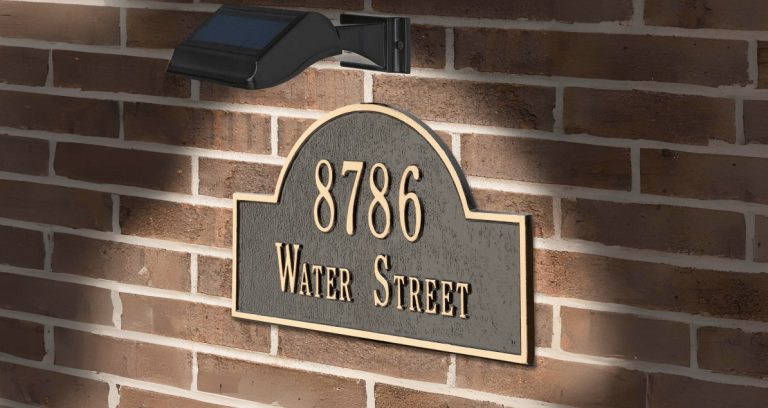Home improvement is a field that constantly evolves, driven by shifts in design aesthetics, technological innovations, and an increased awareness of sustainability. Home remodels, once limited to cosmetic updates or functional fixes, have become avenues for creating more efficient, personalized, and environmentally friendly living spaces. Whether you’re looking to revamp your kitchen, upgrade your bathroom, or completely overhaul your living area, understanding the current trends can help you make informed decisions that enhance both the beauty and functionality of your home.
In recent years, home remodel trends have moved beyond simple updates. With a focus on comfort, sustainability, and versatility, these trends are reshaping the way we think about our living environments. This article explores some of the most transformative trends in home remodeling that are changing the face of home improvement today.
1. Sustainable and Eco-Friendly Materials
Sustainability is no longer just a buzzword; it’s a driving force behind many home improvement trends. Homeowners are increasingly looking for ways to reduce their environmental impact while still creating stylish, comfortable spaces. This has led to a surge in the use of sustainable materials in remodels. From bamboo flooring and reclaimed wood to low-VOC paints and energy-efficient appliances, eco-friendly options are becoming the go-to for modern home improvements.
For example, natural stone countertops made from recycled materials or durable concrete are gaining popularity due to their longevity and low environmental impact. Similarly, the rise of energy-efficient windows, insulation materials, and roofing systems ensures that homes are more energy-efficient and have a lower carbon footprint.
Opting for sustainable materials doesn’t just benefit the environment; it can also save homeowners money in the long run. Energy-efficient upgrades, such as smart thermostats and high-efficiency HVAC systems, reduce utility bills and increase the home’s overall value.
2. Smart Homes and Automation
The intersection of technology and home design has never been more evident than in the rise of smart homes. Homeowners are increasingly integrating technology into their remodels to enhance convenience, security, and energy management. Smart appliances, such as refrigerators, ovens, and dishwashers, can be controlled remotely, offering convenience and efficiency.
Smart lighting systems that adjust based on time of day or occupancy, automated window treatments, and advanced security systems are becoming staples in modern home remodels. Homeowners can now control virtually every aspect of their living space from their smartphone or tablet, from adjusting the thermostat to monitoring the security cameras.
Moreover, home automation can lead to significant energy savings. For instance, motion sensors that control lighting or climate systems help ensure that energy isn’t wasted when rooms aren’t in use. As home technology continues to advance, integrating smart home features into remodels is no longer seen as a luxury but rather an essential aspect of modern living.
3. Open Floor Plans with Defined Zones
The concept of an open floor plan has long been popular in home design, but recent trends have begun to evolve this idea further. While large, open spaces remain desirable, homeowners are seeking ways to define distinct zones within those spaces to enhance functionality without sacrificing the flow.
For instance, an open-concept kitchen, living, and dining area can be delineated through the strategic use of lighting, furniture placement, or even different flooring types. Kitchen islands, for example, are not just functional but serve as a visual divider between the cooking space and living areas. Similarly, large sectional sofas or custom cabinetry can be used to create clear boundaries between zones without feeling disconnected.
This trend allows homeowners to enjoy the benefits of an open layout—such as increased natural light and a sense of space—while also providing the functional organization that helps the home feel less chaotic and more structured.
4. Wellness-Centric Spaces
As health and wellness become an increasing priority in our daily lives, the concept of wellness-centric home design has become a transformative trend in home remodeling. People are rethinking how their living spaces affect their mental, emotional, and physical well-being. This shift is influencing how remodels are approached, particularly in areas like bathrooms and bedrooms.
For example, spa-like bathrooms with features such as freestanding bathtubs, steam showers, and heated floors are becoming increasingly popular. These spaces are designed to promote relaxation and self-care, turning everyday routines into rejuvenating experiences. Similarly, bedrooms are being designed with sleep in mind, incorporating soundproofing, blackout curtains, and calming colors to create an environment conducive to rest.
Other wellness-driven updates include home gyms with ample natural light, spaces for yoga or meditation, and even air purifiers and water filtration systems to improve the quality of the air and water in the home. This growing focus on personal well-being is transforming homes into sanctuaries that prioritize health and comfort.
5. Multifunctional and Flexible Spaces
The events of recent years have made it clear that the need for flexible, multifunctional spaces in the home is paramount. With more people working remotely and spending significant time at home, the desire for rooms that can serve multiple purposes has become a key trend in home remodels.
Home offices have become one of the most popular areas for multifunctional design. These spaces are being integrated into living rooms, bedrooms, or even closets, with custom-built desks, floating shelves, and fold-out workstations that maximize space without sacrificing comfort. Similarly, family rooms are being designed to accommodate both entertainment and workspaces, featuring multifunctional furniture like sofa beds or modular seating that can easily be rearranged.
This flexibility is not just limited to interior spaces. Homeowners are also rethinking their outdoor areas, with many opting for backyard renovations that include outdoor kitchens, fire pits, and multifunctional seating that can serve as both a relaxation area and a social gathering space.
6. Bold Colors and Personalization
While neutral tones have long been the go-to for home interiors, bold colors are making a comeback in remodels. From deep jewel tones to vibrant accent walls, homeowners are embracing color to make a statement and personalize their living spaces.
Kitchen cabinetry, in particular, is seeing a shift away from all-white designs in favor of darker, more dramatic shades. Rich navy, emerald green, and charcoal gray are being used to create a sense of sophistication and personality in the kitchen. Similarly, accent walls painted in rich colors or wallpapered in bold prints are becoming a popular way to inject personality into living rooms, bedrooms, and dining areas.
This trend toward boldness allows homeowners to reflect their individual style and create spaces that feel unique and personal. Whether through the use of vibrant furniture, patterned textiles, or eye-catching accessories, adding color and personality can transform a space from ordinary to extraordinary.
7. Maximizing Outdoor Living Spaces
The trend of expanding outdoor living areas is another significant development in home remodels. As more homeowners seek ways to maximize their time outdoors, outdoor kitchens, lounge areas, and even home theaters are becoming integral parts of home design.
Patios and decks are being outfitted with high-end materials like composite wood and stone to ensure longevity and aesthetic appeal. Custom-designed outdoor kitchens allow for seamless entertaining, with built-in grills, refrigerators, and sinks that mirror the functionality of an indoor kitchen. Fire pits, hot tubs, and well-designed landscaping are also part of this trend, creating outdoor spaces that are as functional and comfortable as any room inside the home.
In addition to providing a place for relaxation and entertainment, these outdoor spaces help homeowners enjoy nature, improve their quality of life, and increase their property’s value.
8. Sustainable Landscaping
Landscaping is another area where sustainability is making a significant impact. Homeowners are increasingly choosing drought-tolerant plants, native species, and low-maintenance gardens that require fewer resources and less upkeep. Water-efficient irrigation systems and rainwater harvesting are becoming common features, reducing the environmental impact of landscaping.
Additionally, there is a growing trend toward edible gardens, where homeowners plant vegetables, herbs, and fruit trees in their yards, not only for aesthetic appeal but also for sustainability and self-sufficiency. This shift toward sustainable landscaping reflects a broader desire to live in harmony with the environment and reduce resource consumption.
Conclusion
The trends shaping today’s home remodels reflect a desire for personalization, sustainability, and functionality. From the use of eco-friendly materials to the integration of smart home technology, these trends are transforming home improvement projects into opportunities for innovation and creativity. Whether you’re looking to create a wellness-focused sanctuary, add multifunctional spaces, or update your home’s exterior, the trends outlined in this article offer a wealth of ideas for enhancing your living space. By embracing these new approaches to home remodeling, you can create a home that’s not only beautiful but also sustainable, efficient, and aligned with your unique lifestyle.















